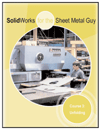Preparing for the new year and planning your safety and health efforts can be accomplished by looking back and looking forward. Below are several items that you may find helpful in maximizing your 2023 safety and health program endeavors. Keep in mind that if your state is a “state OSHA plan”, there may be additional safety and health requirements you need to be aware of and follow. In particular, pay attention to any state or local emphasis programs on safety and health issues under enforcement.
OSHA Recordkeeping
Last year, SNIPS published a short article on OSHA recordkeeping and here is a reminder for 2023. Most companies with more than 10 employees are required by Federal OSHA to maintain injury and illness records on a calendar year basis. In recent years, reporting requirements for electronically reporting illness and injury data changed the process significantly, and there is a proposed rule under consideration that may change things even further.
As of now, establishments with 250 or more employees that are currently required to keep OSHA injury and illness records, and establishments with 20-249 employees that are classified in certain industries (includes construction and metal fabrication shops) with historically high rates of occupational injuries and illnesses need to electronically submit their 2022 OSHA data by March 2, 2023.
As a reminder, the OSHA 300A summary of 2022 recordable cases needs to be posted and available for employee review from February 1 through April 30, 2023. Looking back at your injuries and illnesses last year can help your company plan for this year and use this data to focus your efforts in 2023. Do you see trends in the types of injuries or from certain operations or departments? Can you set a goal of continuous improvement to lower the OSHA incidence rate?
Most Frequently Cited OSHA Standards
While looking back at your company injuries can be helpful in planning, cited OSHA standards can give some direction as well. Below is a list of the most frequently cited Federal OSHA standards for the fiscal year ending September 2022. These standards tend to remain the same year to year, which should give you a big hint on where to focus your safety and health efforts. All these standards apply to the sheet metal and HVAC industry in some fashion so use this list to focus training and compliance resources in 2023.
- Fall Protection – General Requirements (5,260 violations)
- Hazard Communication (HAZCOM) (2,424 violations)
- Respiratory Protection (2,185 violations)
- Ladders (2,143 violations)
- Scaffolding (2,058 violations)
- Lockout/Tagout (1,977 violations)
- Powered Industrial Trucks (1,749 violations)
- Fall Protection – Training Requirements (1,556 violations)
- Personal Protective and Lifesaving Equipment – Eye and Face Protection (1,401 violations)
- Machine Guarding (1,370 violations)
A couple notes about this list. Note that four of the top ten standards are related to falls in the workplace. Please do your best to address this issue across all departments of your company. Nothing good comes from falls. HAZCOM is always high on this list due to the nature of the hazards (chemicals) and the somewhat complicated training involved. See the December 2022 SNIPS safety article. Also be aware that this is an “overall” list. The specific frequently cited standards for general industry (fabrication shops) and construction (work sites) differ so you may want to check those lists if your company specializes in either sector. For example, machine guarding is tenth on this list but machine guarding violations are much more prevalent in general industry than construction.
Project Pre-Planning
Be sure to include safety and health in all your upcoming projects. Pre-planning is done before the main plans so ensure that your annual safety and health budget accounts for all project needs including appropriate personal protective equipment (PPE) and risk management considerations for adequate insurance coverage including emergency preparedness and response to disaster losses. Look for projects that may require non-routine safety and health tasks such as critical lifts and confined space work in construction, and large piecework / special material handling in the shop. Conducting Job Hazard Analysis (JHAs) is a good way to breakdown the jobs and tasks involved in projects to allow for a clearer picture of potential safety and health hazards and recommended abatement strategies. Consider utilizing “Lean Manufacturing” and “Lean Construction” techniques in your project planning. These efficiency-based procedures not only benefit projects from a financial standpoint, but “lean” applications can have a dramatic impact on safety and health simply by adding order to the workplace (housekeeping).
Prepare for an OSHA Inspection
Preparing for an OSHA inspection is a good way to do a “self-audit” of your safety and health program. Keep in mind that the four main parts of an OSHA inspection are: Credential Presentation, Opening Conference (Records Review), Walkthrough, and Closing Conference. During the credential presentation, the OSHA compliance officer will introduce themselves. Here is where your planning should involve knowing how to proceed (legally) including who will represent the company and answer questions during the visit. During the opening conference, they will explain in more detail the purpose of the visit and what they intend to review / inspect. Applicable records are reviewed so best to ensure that all required recordkeeping and written programs are up to date.
Typical records and programs include the company injury / illness log, HAZCOM program, and respirator program. During the walkthrough portion, OSHA will inspect the workplace for the issues involved in the visit which could be the entire workplace or a “partial” inspection. Conducting good workplace inspections for safety and health hazards should be a significant part of your program and good preparation should OSHA arrive. Finally, the closing conference is when OSHA provides the findings of the inspection. To replicate this, get all department heads together on a regular basis to review any safety and health concerns or issues. Look for more information on OSHA inspections in a future SNIPS article.
Have a Safe and Healthy 2023.










